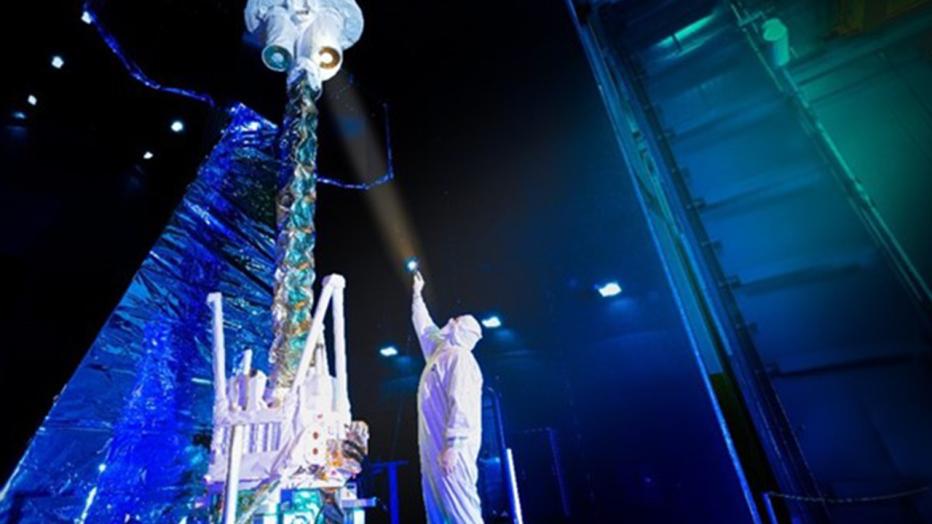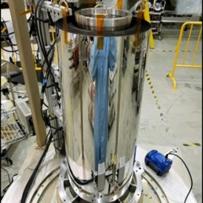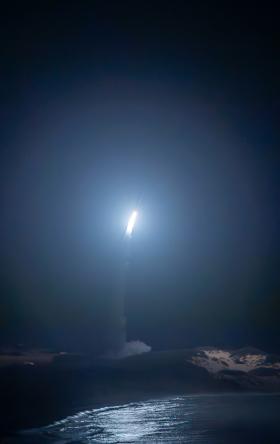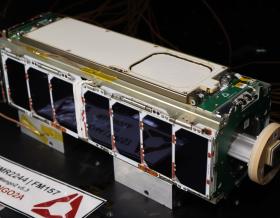
Fully assembled spacecraft (credit: Ball Aerospace)
NASA maintains a high tempo of science and International Space Station mission launches, and Jacobs provides key support in the development and execution of most of them.
One current example is the Imaging X-Ray Polarimetry Explorer (IXPE), a new X-ray telescope that successfully launched on December 9, 2021.
IXPE exploits the polarization state of light from astrophysical sources to provide insight into our understanding of X-ray production in objects such as neutron stars and pulsar wind nebulae, as well as stellar and supermassive black holes.
The Jacobs Space Exploration Group (JSEG), who provides engineering and solutions support to the Marshall Space Flight Center (MSFC), leveraged our world class capability in X-ray optics hardware development to help make this new space observatory a reality.
JSEG provided key engineering, manufacturing and testing support of the Mirror Module Assemblies (MMA), which are needed to collect the X-rays and focus them on the sensors. These MMAs are comprised of concentric tapered cylindrical mirror shells with a surface smoothness of five angstroms. The three-year design and manufacturing effort capitalized on previous experience and successes gained with a multitude of astrophysics X-ray projects.
Partial build-up of the nested shell optics of a mirror nodule assembly

JSEG provided key engineering, manufacturing and testing support of the Mirror Module Assemblies (MMA), which are needed to collect the X-rays and focus them on the sensors. These MMAs are comprised of concentric tapered cylindrical mirror shells with a surface smoothness of five angstroms. The three-year design and manufacturing effort capitalized on previous experience and successes gained with a multitude of astrophysics X-ray projects.
Our Systems Engineering subteam supported key requirement and design reviews as well as the development of verification and acceptance data packages. The Optics subteam produced several components of IXPE’s four MMAs (three flight and one spare), including 24 mandrels, 96 mirror shells, 50 front combs and five rear spiders. The Thermal subteam generated thermal models and verified science requirements were met for the two-year mission and supported multiple 24-hour thermal tests. The Dynamics & Stress subteam made significant impacts when they were asked to perform a redesign effort to respond to hardware development challenges that IXPE experienced during testing. The Electrical subteam provided E3, EEE parts and obsolescence analysis.
In addition to tremendous technical accomplishments, our team focused on continuous improvements for the the internal quality system so it could be leveraged going forward on future projects. We also managed the MMA final assembly, integration & test activities as well as led efforts on flight hardware recordkeeping oversight to fulfill final delivery requirements.
IXPE ground operations will be conducted from the Science Operation Center (SOC) that will help collect and manage the data provided by IXPE. JSEG personnel used operations management expertise gained from the Gamma-Ray Burst Monitor (GBM) to advise and support the development of the SOC and leveraged software testing capabilities to help ensure the customer’s software will be ready to go once the data starts flowing.
JSEG delivered on its support to NASA and MSFC as a contribution to the overall mission, which is a collaboration with the spacecraft vendor, international partners and academia. As with every mission, we improve our capabilities and solutions while giving our employees the opportunity to contribute to innovative projects that help explore deep space.
For more on how Jacobs provides integrated solutions to help solve the most complex and hazardous challenges of space exploration – from launch to flight to splash down – visit jacobs.com.
























































